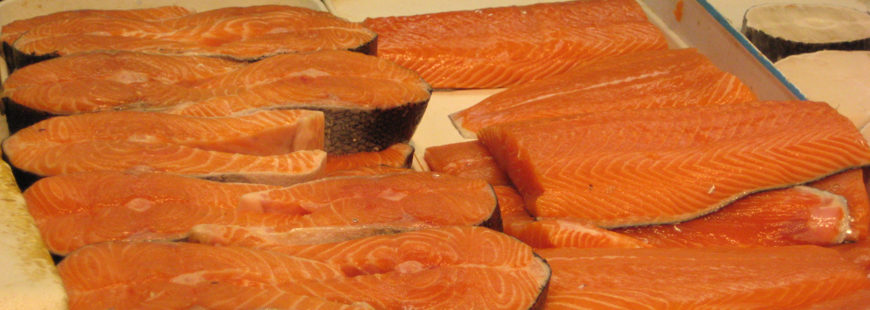In a time when government deregulation is rampant and environmental protections are getting tossed out the window, the USA has a seafood trade deficit that could be improving… that is if American consumers are willing learn about where their food is coming from, and if consumers are willing to pay a fair price for seafood harvested and produced in the U.S.
Currently we import over 90 percent of the seafood we consume in America. More than 50 percent of those imports are farm raised in unsustainable environmental conditions. Only two percent of these imports get tested for toxic residuals. That means that in 2015, 5.4 billion pounds of seafood entered our distribution channels without being tested for toxic chemicals. Overall, most of the imported produce and seafood rejected in border inspections was cited for the appearance of potentially dangerous adulteration, including the presence of pathogens, illegal pesticides, chemicals and other sanitary violations. In addition, foreign products are more likely to be mislabeled and have track records of slave labor involved with catching, harvesting, and growing seafood internationally.
Along our own coastlines, fishermen are coming back to port hailing boatloads of seafood. Much of this seafood is getting purchased by foreign buyers and shipped overseas to consumers in Asia, while Americans are happy to import and consume cheap foreign seafood. This equation isn’t helping our coastal communities or the national economy.
Some of the seafood being landed by domestic fishermen is frozen after harvest, then shipped to China to be defrosted, filleted, packaged, frozen again, then shipped back to the USA to be sold to domestic consumers. This processing in China is cheaper than processing in the USA because labor costs are so much less there, plus there are no import taxes on the products coming back in to the USA – until now. The real cost of these products doesn’t include the carbon footprint of shipping products half way around the world to get processed.
There are mixed opinions about the effects of the Trump administration’s trade wars with China. Recently there was a 25 percent tax slapped on seafood exports and a 10 percent tax on imported seafood products from China. Some seafood industries, including those in Alaska and Maine, have been negatively affected by import taxes. The export taxes have increased the cost to foreign buyers, which has decreased sales significantly due to higher costs with the new taxes. Some organizations state that the trade wars will lower seafood consumption in the United States because it will ultimately make those cheap sources of seafood more expensive. In my opinion the price of cheap, imported seafood does need to go up. If the price of imported seafood and domestic seafood was more comparable, then consumers would take a harder look at the purchase decision. I do believe that we all want to make good choices for the ocean, just sometimes we simply can’t afford expensive seafood.
In the seafood sector, cheap, imported products coming from overseas without import taxes are competing with our domestically caught seafood, which is far superior in quality and nutrition, and helps financially support our domestic coastal communities and working waterfronts. Due to low wages nationally, some people must purchase the cheapest food in order to make ends meet financially. This is why there is so much artificially low priced imported seafood. In order to be so cheap, producers need to cut some corners: possible slave labor, illegal ingredients, antibiotics, hormones, etc. All these cut corners negatively affect either the environment, our body, or other humans. It’s similar to US agriculture policy, where our government has subsidies to help farmers who grow genetically modified corn, soy, and wheat. These subsidies keep prices low for the consumer, creating an artificial price tag that makes “organic” food seem expensive. This is the same equation in domestic vs foreign seafood – one is artificially low priced.
These subsidies make the price tag lower on the face value, but we are still paying for them on the back end through our taxes paid to the US government. This artificial pricing doesn’t accurately reflect the actual cost of those goods when consumers buy them. When consumers see the price tag on a local, organic, or farmers’ market item, they think it’s expensive; however, the real costs of commodity food would be more if the subsidies were not in place and the environmental impacts were included in the cost of the goods.
We have a choice every day to either make this world a better or a worse place in which to live. Some products are produced in sustainable ways for the environment and for our bodies, and some products are produced in ways that harm our bodies and the environment, the people, and the communities in which we live. I encourage you to be mindful of your choices you make at the grocery store, restaurant, and throughout your daily actions.
As a collective community I believe these choices will lead to consumers recognizing the value and nutrition of domestically produced fish. The new demand will absorb the excess production that once went to foreign buyers.
Eat domestic, support your local fishermen, and feed your body great nutrition!


